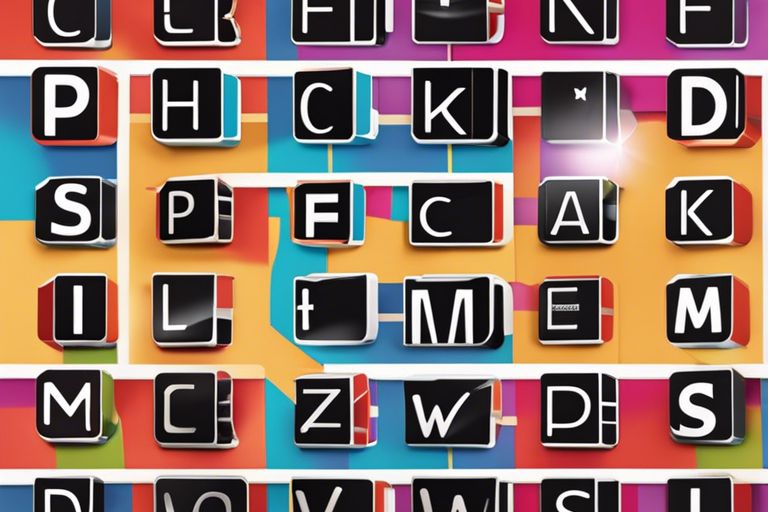#Test Whether you’re a parent or an educator, navigating the world of early phonics education can be a daunting task. One key component of this journey is the Phonics Screening Test, an informal assessment that measures a child’s ability to decode words using their phonics knowledge. Designed for year 1 pupils, this test plays a crucial role in evaluating reading and phonics skills development. In this informative blog post, we’ll examine into the ins and outs of the Phonics Screening Test, addressing common questions like ‘what is the phonics screening check?’ and ‘when is the phonics screening test?’ Armed with this knowledge, you’ll be better equipped to prepare children for success in this important assessment.
Key Takeaways:
- The Phonics Screening Test: The phonics screening check is an informal test conducted at the end of year 1 to assess children’s decoding skills using phonics knowledge.
- Test Components: The test includes decoding 40 words, consisting of real and nonsense words, with a mix of simple structures and more complex patterns like digraphs and trigraphs.
- Preparation Tips: To help children prepare for the test, activities like daily reading, word segmentation, and understanding phonics terms can be beneficial. Patience, positivity, and guiding children through decoding are key elements in preparation.
Understanding Phonics
Phonics and Phonemic Awareness
One fundamental aspect of early reading development is phonemic awareness, which is the ability to identify and manipulate individual sounds in spoken language. Phonics, on the other hand, involves connecting these sounds to letters and letter combinations. The Phonics Screening Test assesses children’s ability to decode words using their phonics knowledge, highlighting the importance of phonemic awareness in reading acquisition.
Decoding Skills in Reading
Phonics plays a crucial role in developing decoding skills in reading. Children must be able to recognize letters and the sounds they represent in order to decode words accurately. The Phonics Screening Test includes a range of real and nonsense words to test children’s decoding abilities, emphasizing the significance of phonics instruction in reading fluency.
Approaches to Teaching Phonics
To effectively teach phonics, educators can utilize various approaches, such as explicit instruction, letter-sound relationships, and blending techniques. By incorporating phonics instruction into daily reading activities, children can strengthen their decoding skills and enhance their overall reading proficiency. The Phonics Screening Test serves as a valuable tool for assessing children’s progress in phonics education.
`
The Phonics Screening Test Explained
` `
The Purpose and Goals of the Test
`
For young students in Year 1, the Phonics Screening Test serves as a crucial assessment of their phonics knowledge and decoding skills. The test aims to evaluate how well children can decode a variety of words, including real and nonsense words, to gauge their progress in reading and phonics.
`
Who Takes the Test? – Target Age Group and Year
`
With the Phonics Screening Test typically administered at the end of Year 1, children around the age of 6 undergo this assessment to demonstrate their proficiency in phonics. The test is designed to support students in developing their reading skills and phonemic awareness at an early age.
Goals of the Phonics Screening Test:
– Provide insight into students’ phonics knowledge. – Measure students’ ability to decode words accurately and fluently. – Identify areas of improvement in reading and phonics skills. `
Test Design and Content
`
For the Phonics Screening Test, students are presented with a mix of 40 real and nonsense words to decode within a short timeframe. The test includes words of varying complexities, ranging from simple CVC structures to more challenging CCVCC and split digraphs, representing different phonemes and graphemes.
Understanding the test design and content is necessary for educators and parents to prepare students effectively for the evaluation. By familiarizing students with different word structures and phonetic patterns, they can build the necessary skills to decode words accurately during the test.
`
Examples and Sample Items
`
Sample items in the Phonics Screening Test may include words like ‘brisk’, ‘splint’, ‘throng’, and ‘flimp’. These words cover a range of phonetic variations and digraphs, challenging students to apply their decoding skills effectively across different word types.
Words featured in the Phonics Screening Test are carefully selected to assess students’ proficiency in decoding and phonics knowledge. By practicing with sample items and understanding various word patterns, students can enhance their ability to decode words confidently during the assessment.
Preparation for the Test
Classroom Strategies for Phonics Instruction
Test after test has shown that the key to strong reading is phonics instruction, which should begin in the early years. Teachers can implement various strategies in the classroom to help students prepare for the Phonics Screening Test. By incorporating interactive and engaging activities, students can enhance their decoding skills and phonemic awareness.
Engaging Phonics Activities and Games
One way to make phonics instruction more engaging is to incorporate fun activities and games into the classroom routine. Games like phonics bingo, letter scavenger hunts, or phonics memory matching can make learning phonics enjoyable for students while reinforcing key concepts. These activities can also help improve students’ phonemic awareness, pronunciation, and spelling skills.
Techniques for Blending Sounds and Recognising Phonemes
Systematic and explicit instruction in blending sounds and recognizing phonemes is important for phonics success. Teachers can use techniques such as phoneme segmentation, blending, and isolating specific sounds in words to help students develop their phonics skills. By focusing on these fundamental phonics skills, students can improve their ability to decode words accurately and fluently.
Home Support – Tips for Parents
- Practice phonics skills daily with your child.
- Read together regularly to reinforce decoding and comprehension.
Phonics learning is not limited to the classroom; home support is crucial for reinforcing phonics skills. Parents can help their children by providing opportunities to practice phonics at home through reading, games, and activities that focus on blending sounds and recognizing phonemes. Recognizing the importance of phonics instruction and supporting your child’s learning journey can have a significant impact on their reading development.
During the Test
Setting Expectations and Preparing Students
For the phonics screening test, it is necessary to set clear expectations for students and adequately prepare them for what to expect during the assessment. With a mix of 40 real and nonsense words, children will be required to demonstrate their phonics knowledge by decoding these words. It is crucial to emphasize the importance of decoding skills and reading fluency to help students feel confident going into the test.
Test Administration and Teacher’s Role
One of the key aspects of the phonics screening test is the role of the teacher in administering the assessment. Teachers are responsible for conducting the test in a one-to-one setting with each student, ensuring that the test is completed within a short timeframe of less than ten minutes. It is crucial for teachers to provide the necessary support and guidance to help students navigate through the words and demonstrate their phonics skills effectively.
Another important aspect of the test administration is the inclusion of both real and nonsense words to challenge students and assess their decoding abilities. Teachers play a vital role in guiding students through the different word structures, such as CVC and CCVCC, and providing feedback to help them improve their decoding skills.
Emotional and Psychological Considerations
Psychological factors can play a significant role during the phonics screening test, as students may experience heightened emotions and stress due to the assessment. It is necessary for teachers to create a supportive and positive testing environment to help students feel at ease and perform to the best of their abilities.
To address emotional and psychological considerations, teachers can provide reassurance, encouragement, and support to help students navigate through the test with confidence. By fostering a positive mindset and reducing anxiety levels, students can approach the assessment with a clear focus on demonstrating their phonics knowledge effectively.
After the Test
Interpreting the Results
One of the key steps after the Phonics Screening Test is interpreting the results. With a pass mark of correctly decoding 30-32 out of 40 words, it is crucial to analyze where a student stands in their decoding abilities. The results can provide valuable insights into the student’s strengths and areas needing improvement, guiding further instruction and support.
Follow-up for Students Below Expectations
After analyzing the results, it is imperative to develop a follow-up plan for students who did not meet the expected pass mark. Additional support and interventions will be put in place to help these students improve their decoding skills. This support is crucial to ensure that students are on track for success in their phonics education.
Plus, communication with parents and guardians plays a vital role in this follow-up process. Keeping parents informed about their child’s performance on the Phonics Screening Test and the subsequent support plan can help create a collaborative effort between school and home to aid the student’s progress.
Communication with Parents and Guardians
On top of providing support for students below expectations, communication with parents and guardians is key. Sharing the results of the Phonics Screening Test and outlining the support plan can facilitate a strong partnership between home and school. Open communication ensures that everyone is on the same page and working towards the best outcome for the student.
This comprehensive approach, involving interpreting results, follow-up for students below expectations, and effective communication with parents and guardians, is imperative to ensure that every child receives the necessary support to excel in their phonics education.
Enhancing Phonics Knowledge Post Screening
Continuous Phonics Development Strategies
Your child has completed the Phonics Screening Test, but the journey towards mastering phonics continues. Enhancing phonics knowledge post-screening involves implementing continuous development strategies to strengthen reading and decoding skills further.
Incorporating Advanced Decoding Skills
Phonics education extends beyond the screening test, encompassing the incorporation of advanced decoding skills. This phase focuses on enhancing proficiency in decoding complex words and mastering phoneme-grapheme correspondences.
| Phonics | Information |
| Segmentation and Blending | Practicing breaking down and blending sounds in advanced multisyllabic words. |
| Digraphs and Trigraphs | Mastering the pronunciation of consonant digraphs and trigraphs in various word contexts. |
Ongoing Assessment and Feedback
Ongoing assessment and feedback play a crucial role in monitoring your child’s progress and targeting specific areas for improvement. Regular evaluations ensure continuous growth in phonics proficiency, paving the way for enhanced reading fluency and comprehension.
To ensure sustained phonics development, educators and parents can provide constructive feedback and tailored support, addressing individual learning needs effectively.
The Role of Phonics Screening in Literacy Development
Defending the Phonics Screening Test
On the significance of phonics screening in literacy development, many experts argue that the phonics screening test plays a crucial role in assessing children’s decoding abilities and enhancing their reading fluency. The test, which includes a mix of real and nonsense words, provides valuable insights into how well children are progressing in their phonics education and helps identify areas for improvement.
Criticisms and Challenges
Screening tests like the phonics screening check have faced criticisms and challenges regarding their effectiveness in evaluating students’ overall literacy skills. Some critics argue that focusing primarily on decoding skills may limit the broader scope of literacy development. However, it is important to note that decoding is a fundamental aspect of reading, and mastering phonics can significantly impact a child’s reading proficiency.
This form of assessment has been integral in shaping early literacy education, and while it may have its limitations, it remains a valuable tool in identifying areas of improvement and providing targeted support to students.
Phonics within the Broader Literacy Curriculum
This subsection probes into the role of phonics within the broader literacy curriculum and highlights its importance in developing strong reading skills. While phonics is just one component of literacy education, it serves as a foundational skill that can significantly impact a child’s ability to decode and comprehend written text. Integrating phonics instruction into the broader literacy curriculum can help students develop a well-rounded set of reading skills that are vital for academic success.
Misconceptions about the role of phonics within the literacy curriculum can sometimes lead to undervaluing its importance. However, addressing these misconceptions and highlighting the significant role phonics plays in literacy development can lead to more effective teaching practices and better outcomes for students.
Innovations and Future Directions
Technological Advancements in Phonics Instruction
Phonics instruction has seen significant advancements in recent years, leveraging technology to enhance learning outcomes. With the emergence of interactive apps, online platforms, and digital resources, students can engage with phonics concepts in dynamic and immersive ways. These tools not only cater to individual learning needs but also provide instant feedback, promoting faster progress in phonetic decoding skills.
Policy Changes and Educational Reforms
It is evident that policy changes and educational reforms play a crucial role in shaping the landscape of phonics education. The administration of the phonics screening test in Year 1 serves as a benchmark for assessing reading and decoding abilities, guiding tailored interventions for students who require additional support. Continued emphasis on phonics instruction within educational policies underscores the importance of foundational literacy skills in early childhood development.
Research Trends and Emerging Data
Future research trends in phonics education are likely to focus on analyzing emerging data to further optimize instructional strategies. Recent studies have highlighted the effectiveness of explicit phonics instruction in improving reading fluency and comprehension. By delving deeper into the cognitive processes involved in phonetic decoding, educators can refine teaching methodologies and interventions to maximize student success in literacy development.
Final Words
Summing up, the Phonics Screening Test is a crucial assessment that tests children on their ability to decode words using their phonics knowledge. Scheduled for the end of year 1, this test consists of 40 real and nonsense words, assessing children’s reading and phonics skills. While the pass mark for the test is 30-32 correct words, failing the test does not hinder a child’s progression to year 2. Instead, additional support is provided to help improve their decoding abilities. Parents can support their children through regular reading, breaking down words, and familiarizing themselves with phonics terms. By understanding the test’s purpose, content, and timing, parents and teachers can effectively prepare children for the Phonics Screening Test and help them achieve success in their reading journey.
Frequently Asked Questions about The Phonics Screening Test
Q: What is The Phonics Screening Test?
A: The Phonics Screening Test is an informal assessment that children in year 1 undertake to test their ability to decode words using their phonics knowledge. It consists of reading a mixture of 40 real and nonsense words.
Q: When is The Phonics Screening Test conducted?
A: The Phonics Screening Test takes place in early June as children approach the end of year 1. In 2022, the screening check will occur on the week starting at the 6th of June.
Q: How can I prepare my child for The Phonics Screening Test?
A: To prepare your child for The Phonics Screening Test, read with them daily, break down new words into sounds, brush up on phonics terms, and encourage positive learning experiences. Bear in mind, children learn at different rates, so patience and positivity are key.













